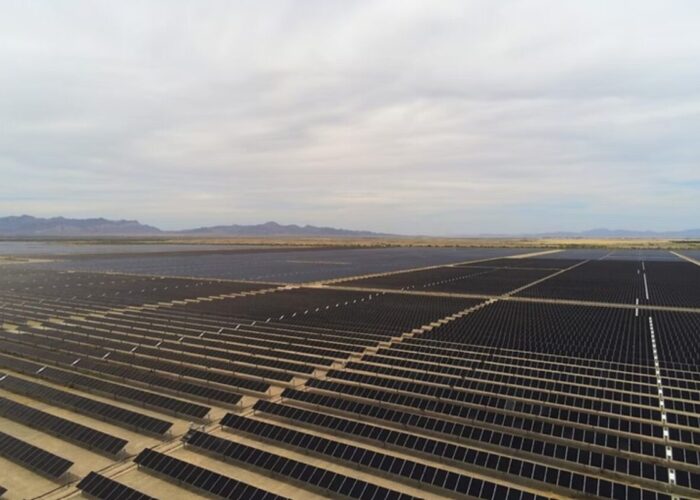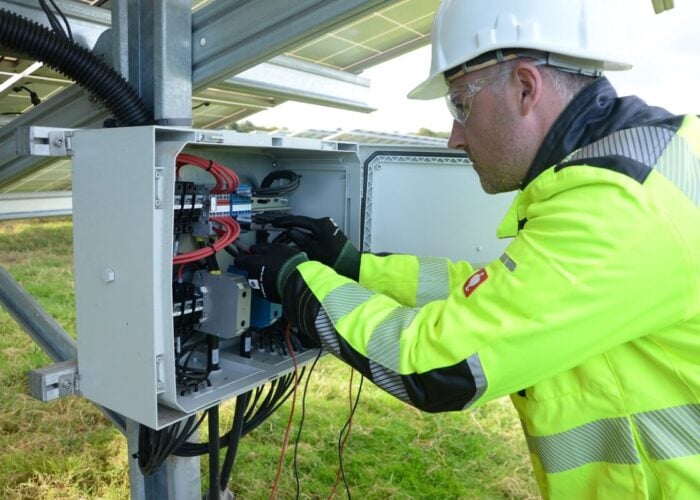US thin-film maker First Solar is targeting the annual installation of 100MW of its panels in Japan through a deal with domestic distributor XSOL.
The alliance was announced ahead of the PV Japan trade exhibition, which takes place in Tokyo from 30 July to 1 August. Under the terms of the supply agreement, First Solar cadmium telluride (CdTe) thin-film modules will be supplied in Japan by XSOL. Both companies will be appearing at PV Japan.
Try Premium for just $1
- Full premium access for the first month at only $1
- Converts to an annual rate after 30 days unless cancelled
- Cancel anytime during the trial period
Premium Benefits
- Expert industry analysis and interviews
- Digital access to PV Tech Power journal
- Exclusive event discounts
Or get the full Premium subscription right away
Or continue reading this article for free
A statement issued by First Solar claimed an 8% advantage on energy yield against its crystalline silicon module-making rivals and a superior temperature coefficient, while XSOL’s announcement of the news on its Japanese website cited the energy yield improvement to be between 5% and 9%.
The move marks a second significant step into the Japanese market for First Solar, following the company’s announcement of plans last year to invest up to US$100 million into ‘mega-solar’ (large-scale) projects in the Asian country. The latest deal is thought to give First Solar the opportunity to be involved in smaller projects as well.
Speaking to PV Tech in May this year, analyst Hiroshi Matsukawa of RTS PV in Tokyo said that partnerships with domestic companies could help foreign entrants into the Japanese market.
“Within Japan there are a lot of local rules and other constraints, so bringing over ways of doing things from abroad and trying to make them work here either can't be done or takes a lot of time. Due to this a lot of foreign companies are suffering hardships in the Japanese market. It's still the case that partnerships with Japanese companies can help.”
Matsukawa cited the examples of Sunpower and Sunedison as companies that were well established internationally, but had struggled to make inroads into Japan.
“The companies I've mentioned as struggling are the ones that are attempting to go it alone, so however hard they try it will take time. The partnerships they are forming with Japanese companies tend to be very limited in scope so while a company like SunEdison has a very strong track record internationally, they are finding it difficult to repeat that success in Japan.”
A survey conducted by the Japan Photovoltaic Energy Association (JPEA) showed that shipments of solar cells and modules increased in Japan by 100% on a year-on-year basis to the first quarter of this year. This included a modest rise in the involvement of foreign players, with the market share for domestically produced modules dropping slightly from 77% to 71%.
Hiroshi Matsukawa of RTS PV said however that despite the higher price of Japanese modules, projects using them found it easy to attract finance from Japanese lenders than those using foreign modules.
“Prices on Japanese made modules are very high so it is not an easy market to operate in. However Japanese lending institutions have a definite preference for Japanese made goods, or rather I should say Japanese branded goods have a better chance of attracting capital.”
Matuskawa pointed out that some companies such as Sharp and Toshiba were bringing in modules from China to Japan under the original equipment manufacturer (OEM) model to sell under their own Japanese brand names. According to Matsukawa, factors including the recent Suntech bankruptcy made Japanese banks weary of lending to projects utilising Chinese brands, in particular.






